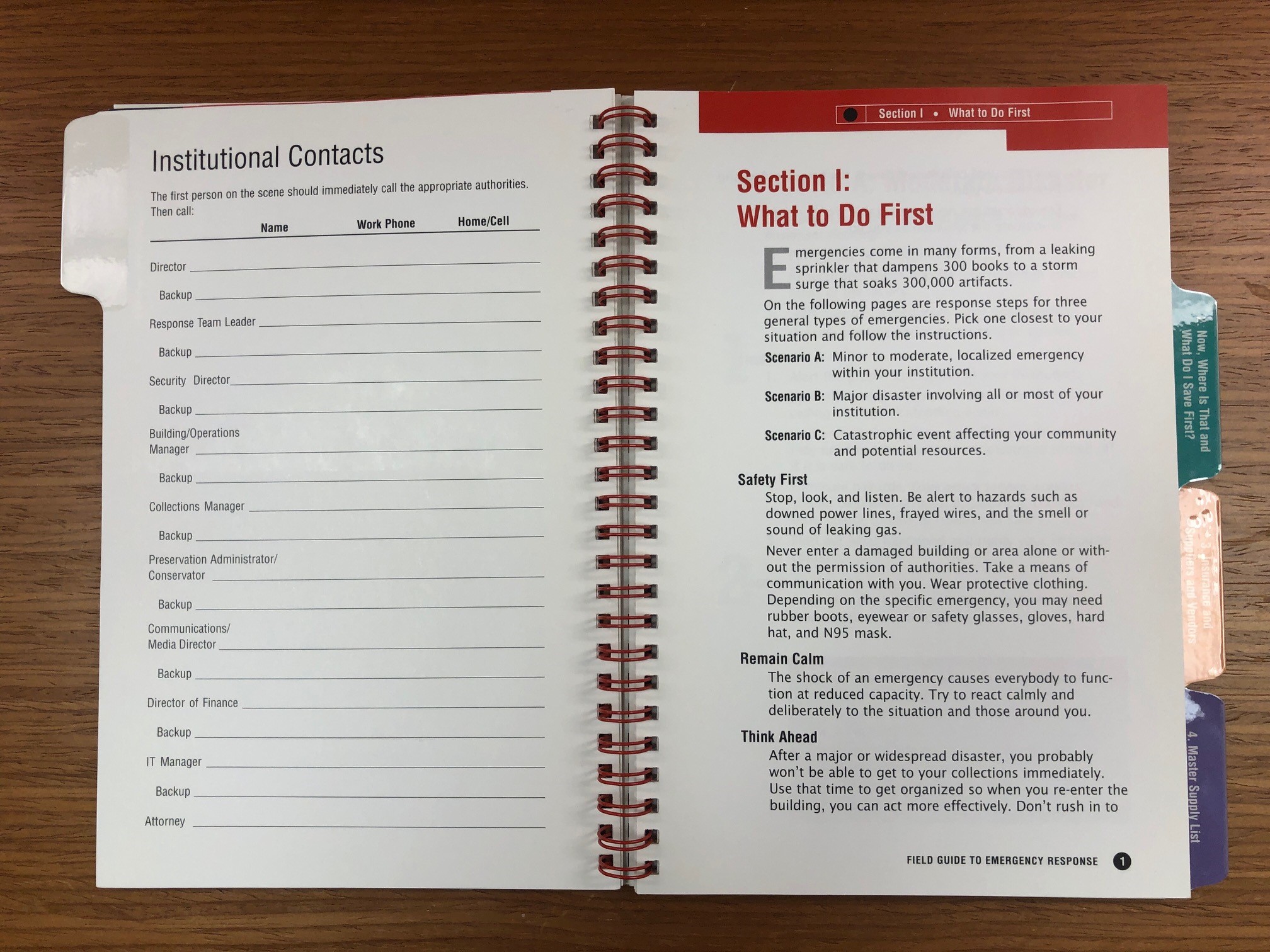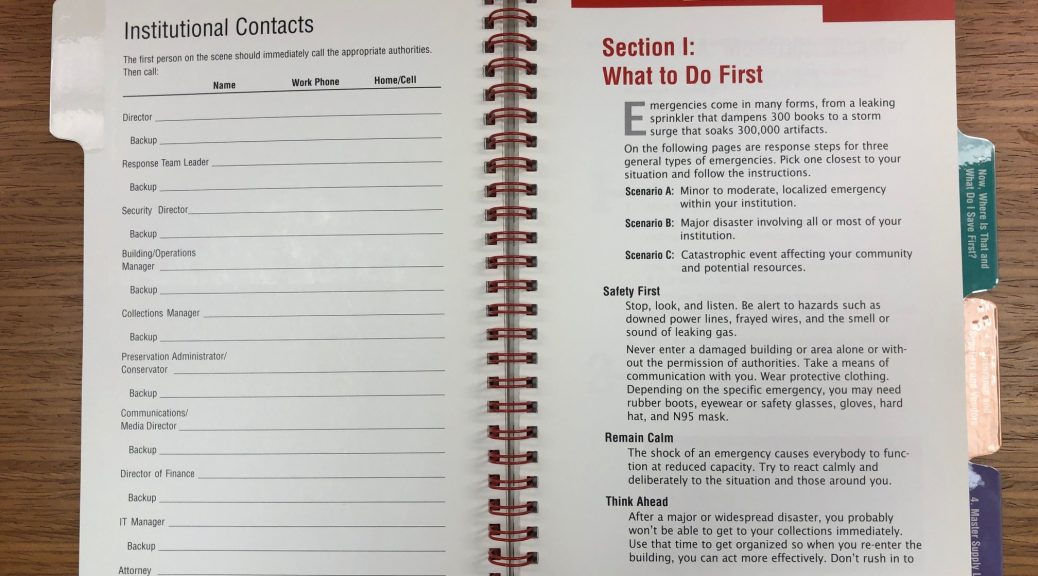 It’s May Day, the annual celebration that reminds you to spend a few minutes to make sure your cultural heritage organization is ready when a disaster hits. Be it small or large, any kind of emergency in your institution needs a plan.
It’s May Day, the annual celebration that reminds you to spend a few minutes to make sure your cultural heritage organization is ready when a disaster hits. Be it small or large, any kind of emergency in your institution needs a plan.
Do one thing today to make sure you are ready. That can be making sure the phone numbers and URL’s in your plan are updated; you can look at your disaster kit and make sure your have plenty of supplies on hand; or make sure everyone in your organization knows where they can find a copy of the plan.
Disaster Plan Templates
A 2014 follow up survey by IMLS indicated that only 42% of collecting institutions had a disaster plan. While that was almost double from the initial Heritage Health Survey in 2004, that is still an alarming number. It may take more than 15 minutes to write a plan. There are many templates out there, and once you have that draft the subsequent updates are easy.
The Pocket Response Plan (TM) PREP (TM) templates are one of the easiest plans to adopt. These are customizable templates. We have a phone tree on one side, and we wrote First Steps for staff who will be first on the scene. This plan folds down into a credit card-sized plan that can fit into a small envelope or your wallet. Handy especially when cell phone towers are out due to storms.
The Field Guide to Emergency Response is a handy spiral-bound book that can walk you through creating a disaster plan. This is a great option for smaller organizations, or for people who like a portable paper option for your plan.

The Risk Evaluation and Planning Program (REPP) is a series of self-study tools. Originally developed by Heritage Preservation with support from an IMLS grant, the project helps you identify your institution’s risks, helps you prioritize risks, and provides many checklists and worksheets. It requires some time to go through the entire set of worksheets, but you will know a lot about your building and risk factors at the end.


